Robinhood shares gain on Q2 beat, as user and crypto growth accelerate
Introduction & Market Context
Gladstone Commercial Corporation (NASDAQ:GOOD) released its first quarter 2025 supplemental financial and operating information, highlighting continued execution of its strategy to increase industrial property concentration while maintaining strong occupancy rates and reducing leverage.
The real estate investment trust reported solid performance metrics amid a challenging commercial real estate environment, with its stock currently trading at $13.83, down 1.78% from its previous close of $14.08.
Q1 2025 Performance Highlights
Gladstone Commercial generated funds from operations (FFO) and Core FFO of $15.3 million, or $0.34 per diluted share for the first quarter of 2025. The company maintained its monthly dividend of $0.10 per common share, resulting in $0.30 for the quarter and an annualized dividend of $1.20 per share.
The REIT continued its acquisition strategy with a focus on industrial properties, completing two significant transactions during the quarter: a five-property industrial portfolio in Houston, Texas for $29.3 million with a 10.0-year lease term, and a 140,304 square foot industrial property in Dallas Fort Worth, Texas for $44.0 million with an 11.3-year lease term.
As shown in the following portfolio overview:
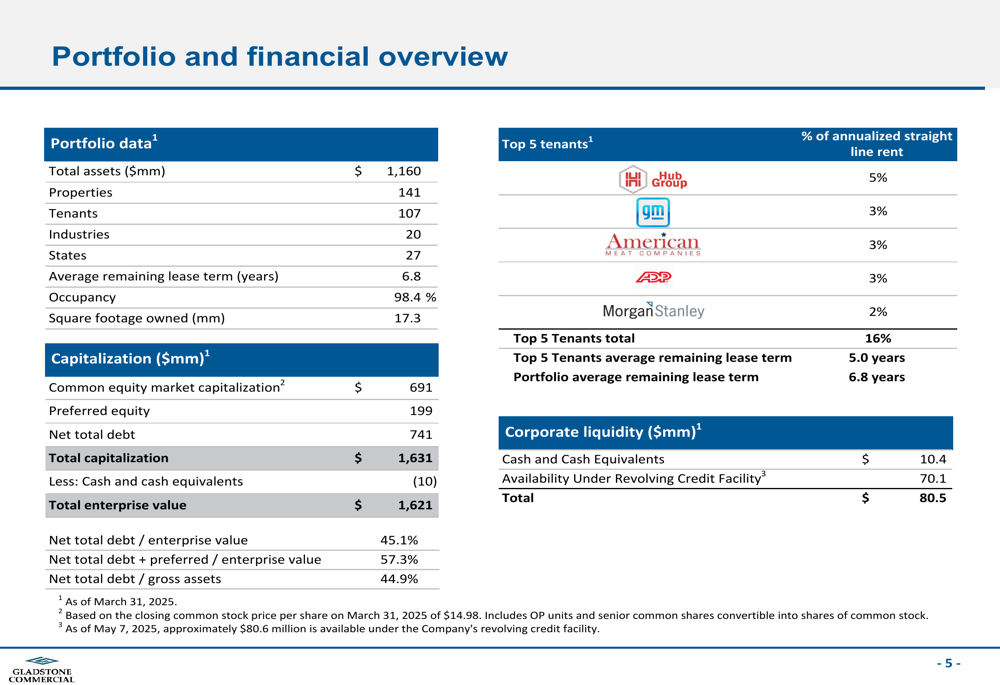
The company maintained a high occupancy rate of 98.4% across its 141 properties spanning 27 states, with an average remaining lease term of 6.8 years. Approximately 53% of Gladstone’s tenants have investment grade or investment grade equivalent credit ratings, providing stability to the company’s income stream.
Portfolio Composition and Strategy
Gladstone Commercial’s portfolio transformation toward industrial properties continues to progress, with industrial assets now representing 65% of annualized straight-line rent, up from 63% reported in Q4 2024. This aligns with management’s previously stated goal of reaching 70% industrial concentration.
The company’s geographic diversification is illustrated in this regional breakdown:
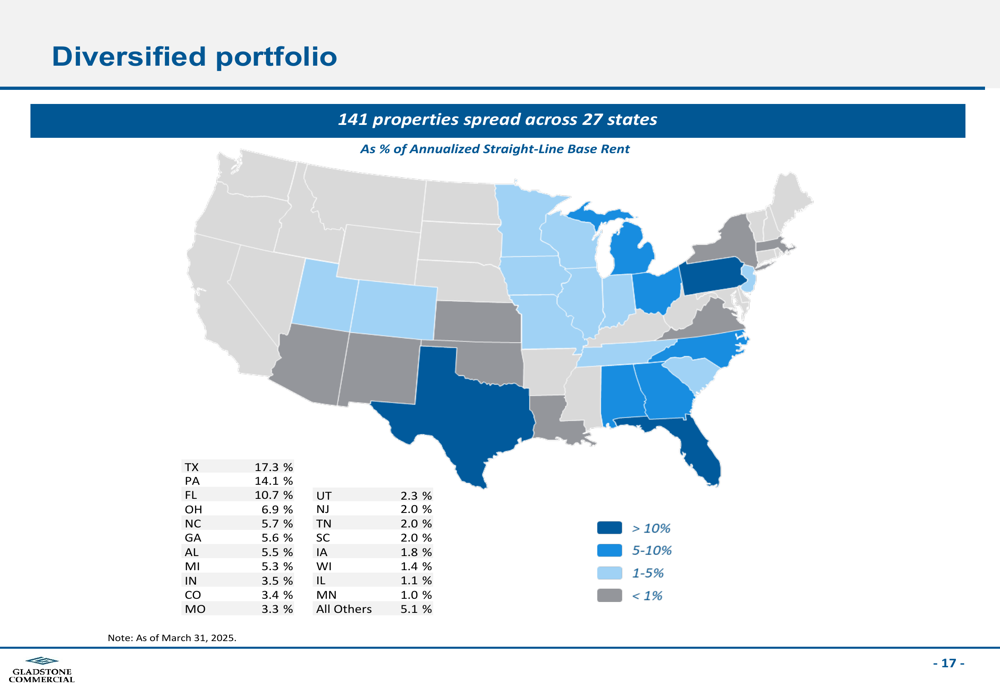
Texas represents the largest concentration at 17.3% of annualized straight-line rent, followed by Pennsylvania (14.1%) and Florida (10.7%). This geographic diversity helps mitigate market-specific risks while maintaining focus on secondary growth markets.
The portfolio’s diversification across property types, industries, and tenant credit quality is demonstrated in the following charts:
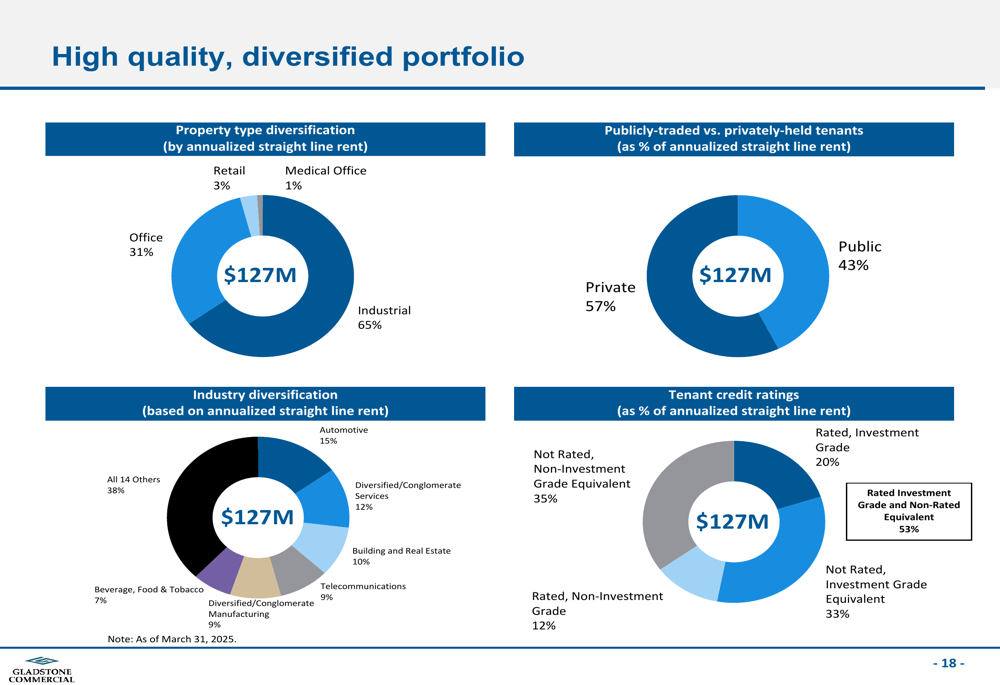
The company’s tenant base spans 20 industries, with automotive (15%) and diversified/conglomerate services (12%) representing the largest segments. This diversification helps protect against industry-specific downturns.
Financial Position and Capital Structure
Gladstone Commercial reported total assets of $1.16 billion as of March 31, 2025. The company’s capital structure shows a balanced approach to financing, with common equity representing 42.6% of capitalization.
The capital structure breakdown is illustrated below:
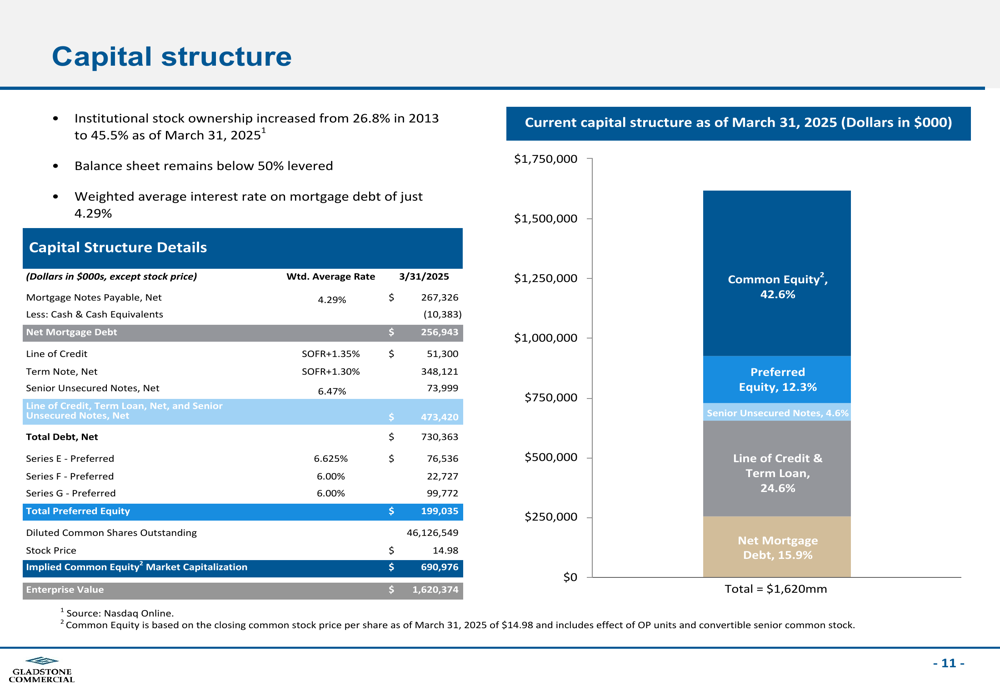
The company has made significant progress in reducing leverage, with its leverage ratio decreasing from 58.1% in 2014 to 43% as of Q1 2025, aligning with management’s goal of bringing leverage into the lower 40% range.
Gladstone’s debt profile and maturity schedule demonstrate a well-structured approach to managing financial obligations:

The company maintains a balanced approach to interest rate risk with 45% fixed-rate debt and 47% hedged floating-rate debt, leaving only 8% exposed to floating rates. This strategy helps mitigate potential impacts from interest rate fluctuations.
Liquidity remains strong with $10.4 million in cash and $70.1 million available under the revolving credit facility, providing $80.5 million in total liquidity for future investments and operations.
Forward Outlook
Gladstone Commercial’s lease expiration schedule shows a smooth rollover pattern, with 53.4% of leases by annualized straight-line rent expiring after 2031, providing long-term visibility into the company’s revenue stream:
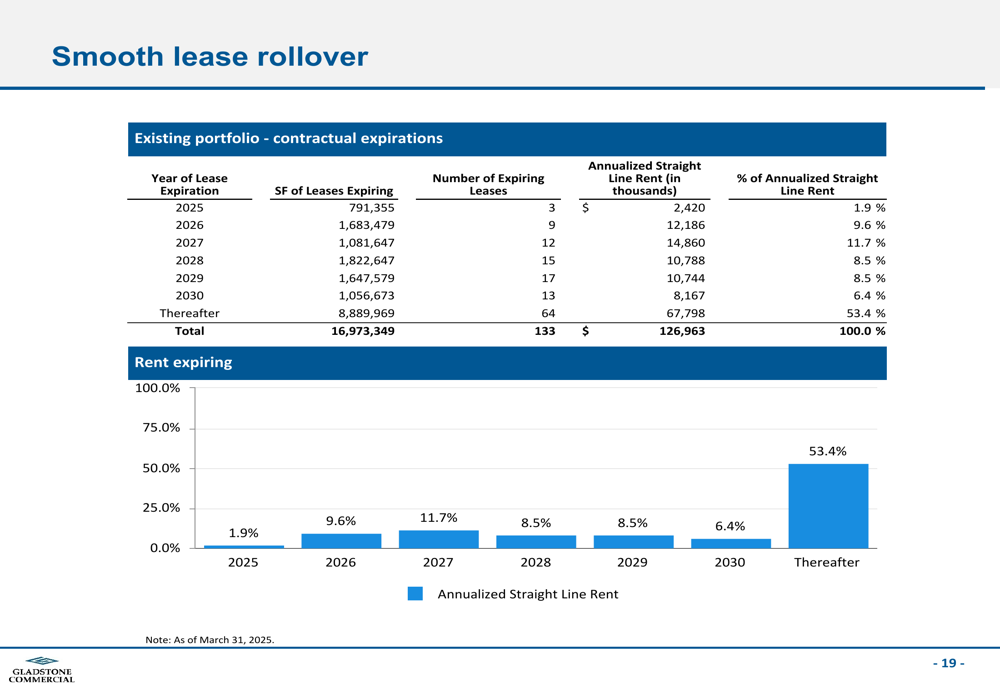
The company continues to execute on its strategy of recycling capital by selling non-core assets and redeploying proceeds in growth markets, with a particular focus on industrial properties. This approach aligns with broader market trends favoring industrial real estate over office properties.
Institutional ownership has increased from 26.8% in 2013 to 45.5% as of March 31, 2025, potentially indicating growing confidence in the company’s strategic direction and execution.
As Gladstone Commercial progresses through 2025, investors will be watching closely to see if the company can maintain its high occupancy rates and continue its portfolio transformation while navigating the evolving commercial real estate landscape.
Full presentation:
This article was generated with the support of AI and reviewed by an editor. For more information see our T&C.
